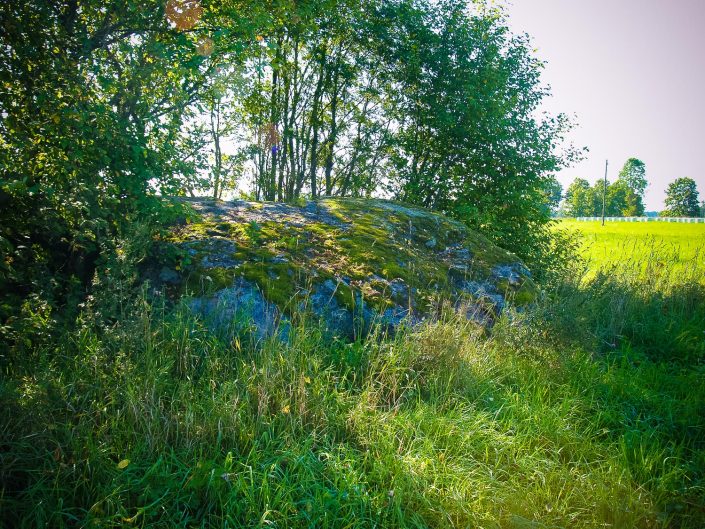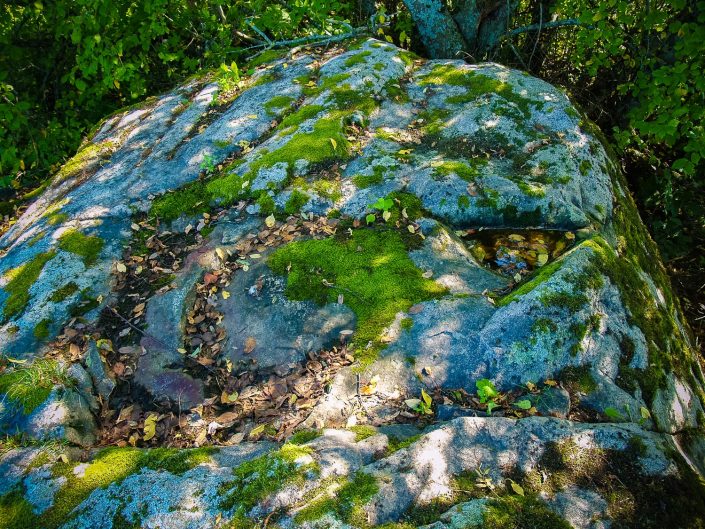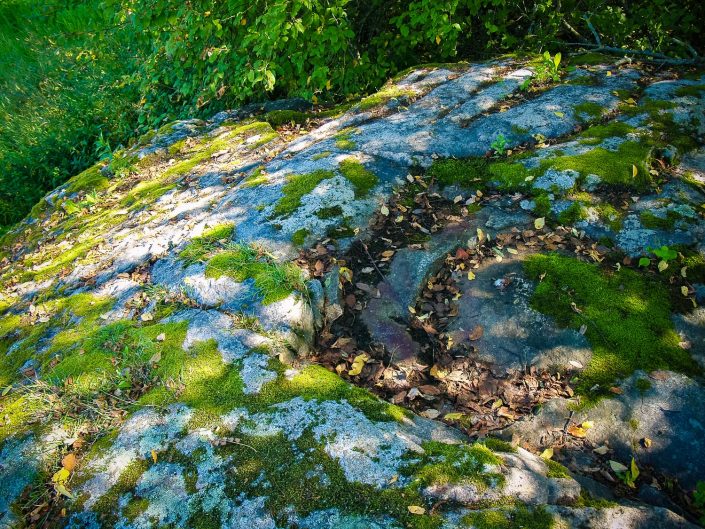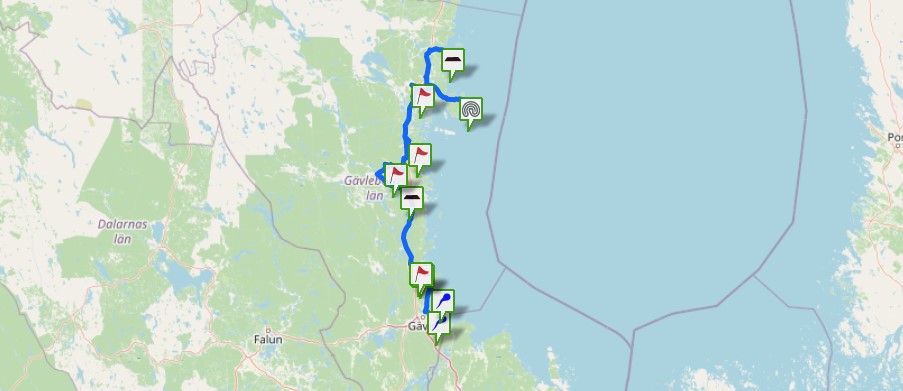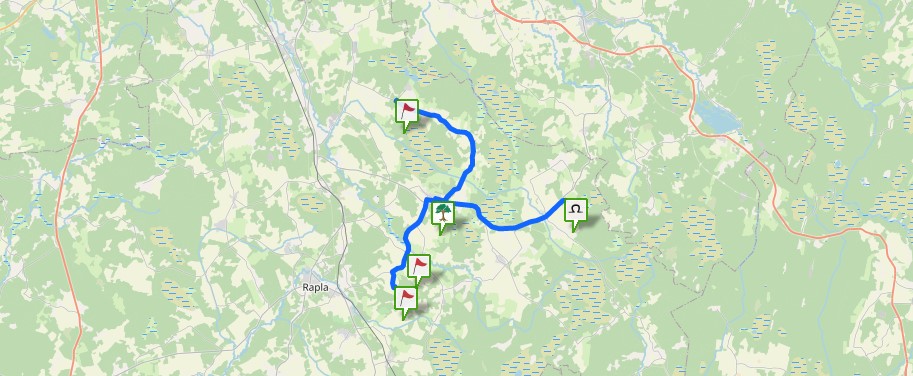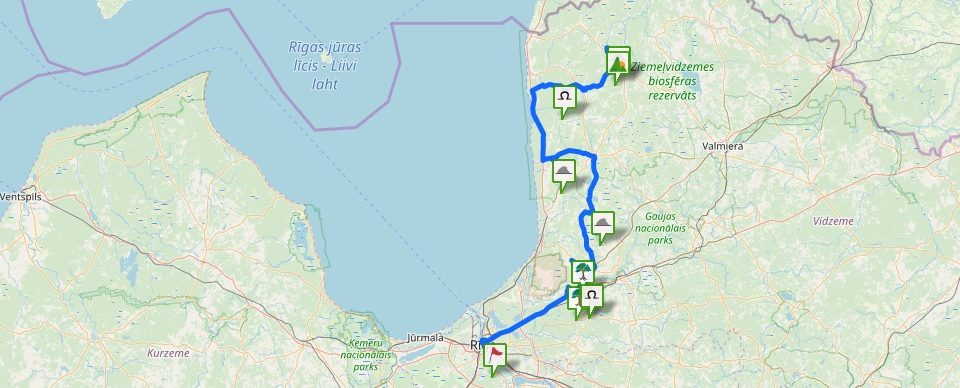The length of the considerably eroded and cracked stone is 5.8 m, the biggest width is 5.2 m, height 1.7 m, circumference 17.5 m, the volume above the ground around 15 m2. The stone (metamorphyzed biotite hornblende granite with a fespar vein) is of irregular shape and non-homogenous composition; it is bedded, there are traces of broken-off pieces and it is slightly covered with moss. In the gently sloping surface there is a shallow hole (about 1 x 1.4 m) or, rather, a break-off spot, where approximately half a bucket of water can accumulate. The cavity in the stone slightly resembles the cavities of Vidzeme pothole stones, however, there are no direct evidences about using the stone in cult activities. The so-called pothole cavity, or rather a break-off spot, is relative in the gently sloping stone surface. In the pothole break-off spot the water is darker because rain water accumulates here and deposits form. No certain trace of human modification of the stone can be found. A mythological legend has been recorded that the stone was brought by the Devil to dam the Ogre River, however a rooster sang and the devil dropped the stone. The Devil’s Stone lies in a meadow and is an important part of the scenery, but unfortunately it is starting to overgrow with bushes. At the stone on the ground there are some bigger broken-off pieces. It is possible that at the stone there are also some partly filled traces of formerly dug-up land.
At the Ķegums – Suntaži highway there is a sign that the Devil’s Stone is 200 m away. In this direction there is a country road filled with stones, however the big stone (which has hid in thick bushes) is not easy to find; no further directions are provided. From three sides the stone is comprised by rowan-tree, linden and other bushes. From a distance the otherwise big stone is not visible. Next to the stone on the poles a bigger electricity transmission device has recently been constructed which influences the visual perception of the Devil’s Stone.
